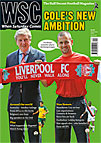 While goal-line technology is a popular concept in theory, Rob Freeman explores the issues it may bring into the game
While goal-line technology is a popular concept in theory, Rob Freeman explores the issues it may bring into the game
It’s not often that UEFA makes changes in the Champions League that benefit football at all levels, but this season sees the use of extra officials behind the goal, as piloted in last season’s Europa League. This is in line with FIFA’s recent decision to ignore renewed calls for goal-line technology, and refusal to even consider the subject, despite incidents such as Frank Lampard’s World Cup “goal” against Germany. Such a decision has angered those in the media supportive of using technology, but have they thought it through?
For a start, technology is only as infallible as the humans that create it. Officials behind the goal may still make mistakes when it comes to whether a goal has been scored, but one of the two systems to have been trialled (Hawk-Eye) claims that their setup is only accurate to 5mm – in other words, their system will award “phantom” goals, as well as rule out legitimate goals. The other system (GLT), created by Cairos in association with Adidas, involves microchips and magnetic sensors, and it’s not beyond the bounds of possibility that the technology could be tampered with by the home team.
There’s also the question of logistics. When Hawk-Eye trialled their system in 2007, they claimed that it would cost up to £250,000 to install the system per ground, but free for Premier League clubs, in exchange for sponsorship. However, these teams also play in other competitions. Premier League sides often play countries from so-called poorer nations in the qualifiers for the Champions and Europa Leagues, and Football League sides often reach the latter stages of domestic cup competitions. If one of two games uses technology but the other – whether it is a second leg or a replay – does not, the integrity of the game becomes skewed, because individual ties, let alone individual rounds, will find themselves being played under different sets of rules.
At a time when so many clubs are feeling the pinch, it does not seem right that £5 million is spent resolving half a dozen contentious issues a season. By following UEFA’s lead and employing an extra official at each end for up to £400 each (the approximate match fee for assistant referees at Premier League level), these assistants could spot other incidents as well. Hawk-Eye and GLT would not have seen Thierry Henry’s handball against Ireland, while an official behind the line would have done. Extra officials could be implemented at every level as long as there are enough of them, and they could immediately reach as far down as Conference level, which is something unlikely to happen with goal-line technology. Even Hawk-Eye and GLT wouldn’t necessarily represent a one-off fee as cameras would need to be replaced if a shot hit them hard enough. The balls used for GLT would also need swapping whenever Adidas launch yet another new model in the search for replica sales.
The problem with most goal-line incidents at present is not whether the official is competent, but that the decision rests with the assistant referee, who supposed to be in line with the last defender and not on the goal-line. In the case of Lampard’s “goal”, the assistant referee was positioned correctly, but the one thing that prevented him seeing the incident wasn’t ineptitude but an obscured view. It would also have been interesting to see if Hawk-Eye could have coped with the other major World Cup goal-line incident – following Fabio Quagliarella’s shot during Italy v Slovakia, three of their four cameras would have been blocked by Martin Skrtel on the line. None of the eight angles on the day could offer any evidence where the ball was.
Then there is the biggest problem of all. Once the way is paved for goal-line technology the floodgates will open. More companies will find ways to help football for the right price, because “there’s too much money at stake”, as though everybody but the officials is perfect. Most of these innovations will need the play to be stopped while we wait to see if it was handball, a penalty or even offside. The beauty of football is that as a game it flows and, unless a player is injured, the game doesn’t stop. It pauses. The game has been organised for over 120 years and has become the most popular sport on earth because it doesn’t stop and start all the time. The game isn’t broken – it does not need technology to fix it.
From WSC 283 September 2010